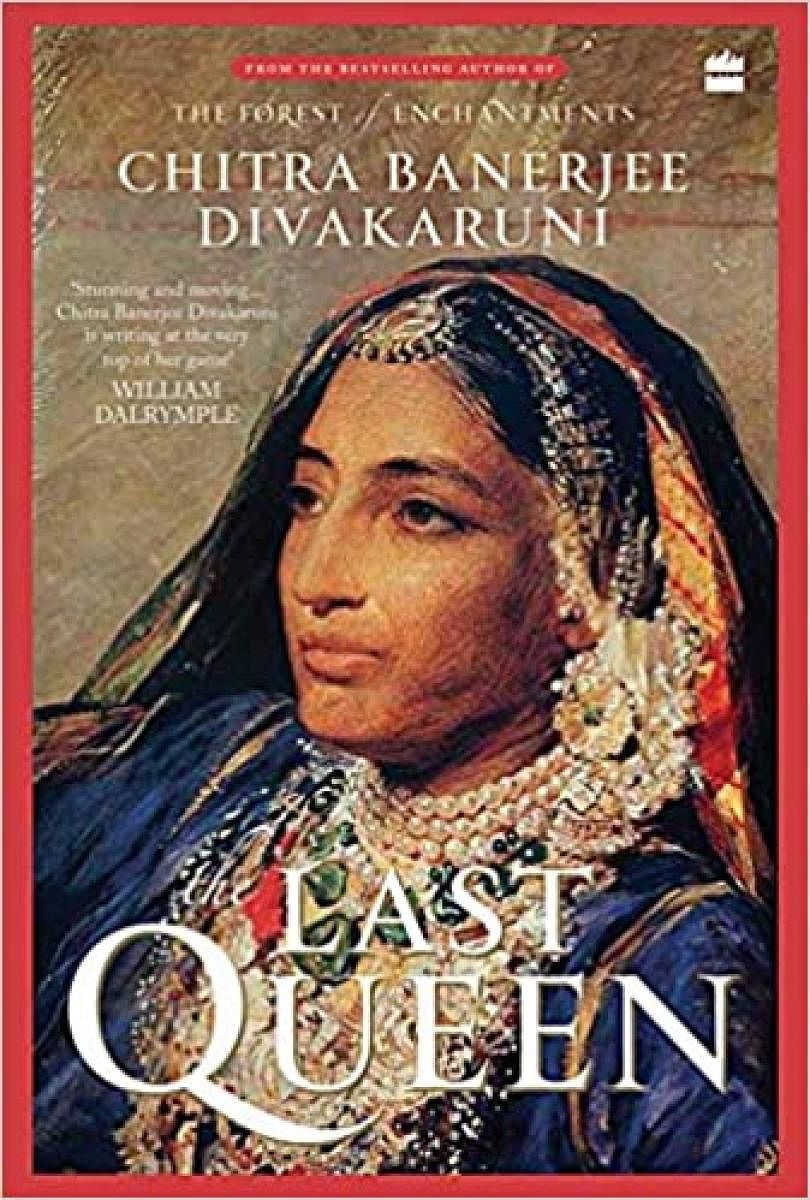
Any book that rediscovers our heritage is a good book. Even a fictionalised biography of a powerful queen that leans in style towards regency romance. Of all Chitra Banerjee Divakaruni’s books, The Last Queen is the new favourite. Not only has the author outdone herself with this magnificently packed offering, she has filled Rani Jindan Kaur’s life with realistic and engaging dialogue; with Maharaja Ranjit Singh, with the palace intrigues of the zenana, with her wazirs and courtiers, with her son Maharaja Sir Duleep Singh, but also with herself and her circumstances. We see this formidable queen of Punjab not as a historical figure, but as a woman who strides past frailties to meet with her grim destiny.
The reader is drawn in by the detailed descriptions of the royal court of Punjab within the Shahi Qila, Lahore. Rani Jindan’s short years with Maharaja Ranjit Singh were wonderful, though marred with conspiracies, at times severely limiting her personal rights, and attempts to poison or murder her. After the Maharaja’s death, her world is plunged into chaos and power struggles in the deadliest game of thrones.
Many subtexts
Each subsequent victor meets with a gory death and all the while, the ominous and Machiavellian British forces draw ever closer. Despite these maelstroms, the fates hand out the Rani a reprieve when her infant son is crowned the new Maharaja of Punjab and she is made the Queen Regent. The uneasy alliances with those who are meant to work for the young king, the kingdom and for her, form the bulk of this narrative. Almost as subtext, there’s on view the unbelievable avarice, machinations and brutal disloyalty that plagued Punjab’s capital Lahore as also all the princely states of India and made each of them ripe for picking by the British. Our victors were shrewd, but it was the rot within that aided in total annihilation. And plunder was not carried out by the enemy alone, but by people within, who repeatedly defiled the royal treasury.
“Once or twice, his eye fills with tears. I wipe them away quickly. He wouldn’t want his courtiers to see the Lion of Punjab weeping like an ordinary father.” Lines such as these are reminders that engaging though the storyline is, this too is fiction and limited by a modern perspective of royalty in the mid-nineteenth century. What really do future chroniclers owe their heroines and protagonists?
Of course, historical fiction compels an author to make myriad choices and each interpretation of transposed facts may be deemed true. However, the reader does entertain doubts whether, for instance, the keeper of the royal kennels in Lahore was such a lowly post that his children were starving or stealing fruit to survive. Socially, the family may not have been considered elite, but the head of the kennels was probably moneyed and influential enough in his own right, as was each handpicked individual employed by the palace.
While the portrayal of the impoverished young Jind Kaur of Gujranwala may still fly, her going to regular school with her brother in 1830s’ India, taxes the imagination. And putting on record her romantic entanglement and more with the wazir Raja Lal Singh in the absence of concrete evidence is dicey, especially when it is much documented that the British had launched a smear campaign against the Rani as the “Messalina of Punjab”, a woman with multiple paramours. These are, however, minor quibbles.
A slow unravel
In how the narrative is constructed, taut and full of nuggets for the student of warfare strategy or of history to glean, is the extraordinary accomplishment of binding the sweep of a grand life within the covers of a book. More importantly, Rani Jindan Kaur is reconstructed with immense love as an entity whose passion for the motherland will haunt the contemporary reader.
Too little is made of pace in the books we read. While packed with action, there are spaces where time stands still while the narrative tarries, explores relationships and love.
While Rani Jindan seems formidable in her own right, it is in her relationships and how they moulded her life that she scintillates.
The tenderness within her inner circle of the Maharaja and the little prince, her brother Jawahar, her spiritual guide and mentor Fakir Azizuddin, her maids Mangla and Maahi, trusted guard Avtar, with Raja Lal Singh and even the uneasy truce binding her wazir Hira is where the queen stands vindicated. And this is done with the finesse of a writer at the height of her powers.
“Unputdownable” is often said as a joke, but holds true here. The deft writing and the slow reveal build up a thirst in the reader, a thirst that isn’t quenched by the last page; only a prequel around Maharaja Ranjit Singh and/or a sequel around Maharaja Sir Duleep Singh may completely satisfy.